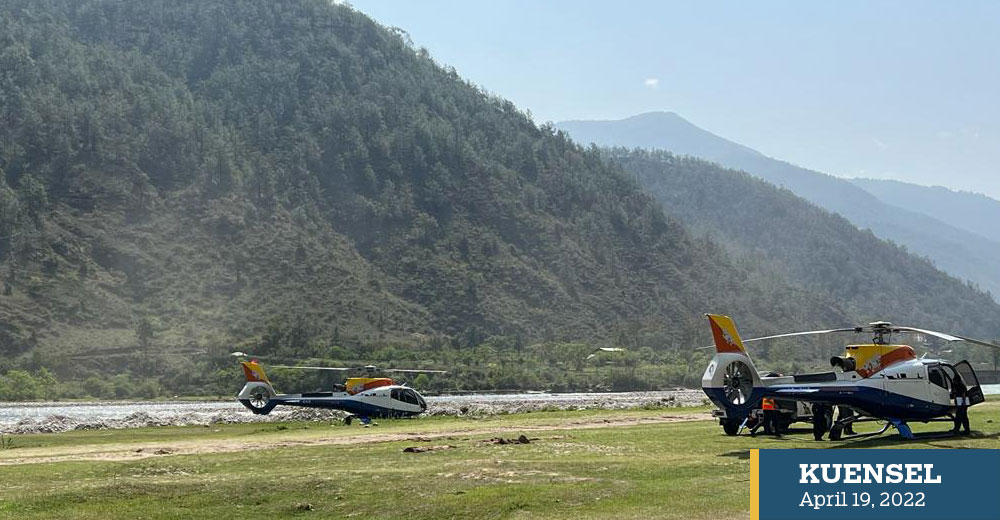Nima
When Lunaps return home from the warm valleys of Punakha after a heavy snowfall in the past, young and strong men form groups to cut through the snow and pave way for the rest.
A man could dig only one to two metres of a path in a day. The team retires to camp, tired and almost beaten by the frost towards the evening. It used to take almost 25 days to reach Lunana from Punakha.
The trek to Lunana from Tashithang and Goenshari in Punakha even in clear weather on average takes eight days and at least five days for locals.
Such treks have become history for most Lunaps today. They have a faster and easier option: the helicopters.
The month-long journey home is reduced to less than half an hour trip now.
The heavy snowfall in February and lockdown restrictions delayed their return home this year. Almost all people from Lunana had to charter helicopter service last week.
The two helicopters made almost 50 flights to Lunana from Zomlingthang in Punakha last week. The last flight was on Sunday.
Lunana Gup Kaka said that only children, women, and the elderly from Lunana used helicopters to return home.
“The men trekked with horses every year. The trails are covered in snow and horses couldn’t be used to ferry food and essentials this time,” he said.
He added that helicopters made only 50 to 60 trips a year. However, the number of trips increased this season, according to the gup.
“Only half the people could afford to charter flights today. The rest borrowed or loaned money. We had to return home anyway and there was no other option,” said Kaka.
Officials from Bhutan Helicopter Services Limited (BHSL) said that the change in weather played important role in the highland migration pattern this year.
“Snowfall made it difficult for highlanders to hike back home. They preferred helicopter service to hike. Some of them were stranded in Punakha because of the lockdown,” an official said.
People from Lunana reserved 22 flights and 25 official flights were made last week alone, according to the record with BHSL. The charter fee for a round trip to Lunana is Nu 117,500.
Residents from Lunana hire helicopters together and have to pay at least Nu 52,000 for a trip from Zomlingthang to Lunana. “We travel in groups and divide the charges.”
Affordability
Considered as one of the most remote gewogs in the country, Lunana in Gasa, the highland community with little over 3,000 people depends on cordyceps and livestock for livelihood.
Locals say the decrease in cordyceps harvest and the increased number of collectors have threatened the main source of income. Hiring a helicopter for seasonal migration is becoming expensive for more than 50 percent of the people in Lunana.
“People would be able to charter helicopters only if the charges are lowered in the future. If the situation remains the same and cordyceps harvests continue to decline, it would be difficult for most Lunaps to hire helicopter service,” the gup said.
He added that the people from Lunana have to sustain their livelihood; buy food stock, essentials, and clothes, mostly from the income from cordyceps.
The gup said that allowing the people to explore herbal plants and other forest resources would help secure the livelihood of the highlanders. “Building road to Lunana would bring change,” said Kaka.


